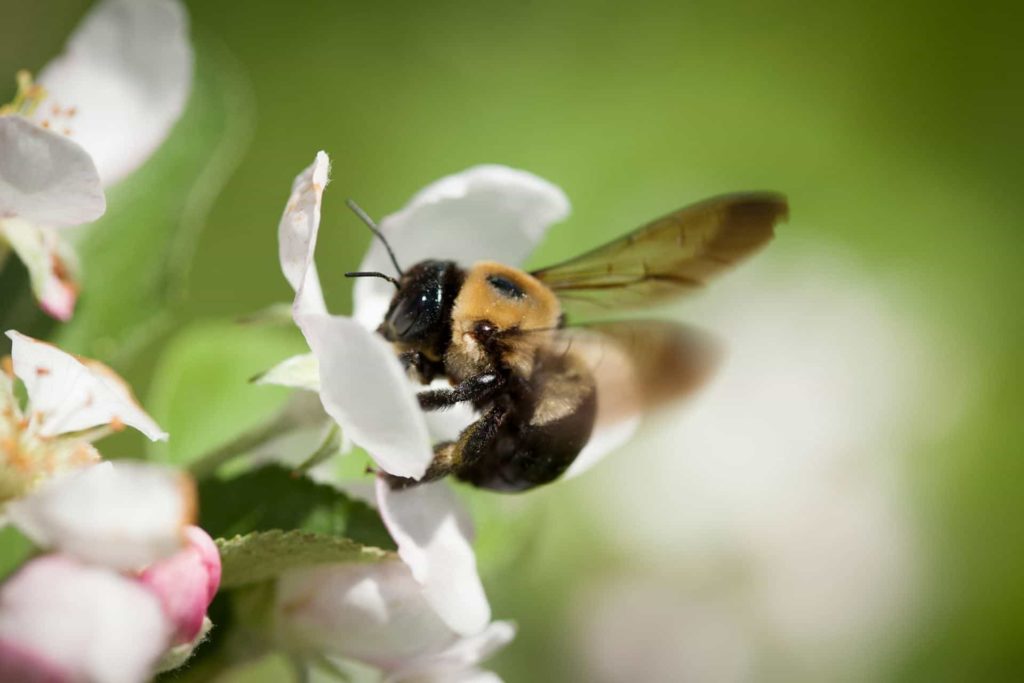CSAs are Buzzing and So Are Pollinators
Changes made by the COVID-19 pandemic have benefited at least two facets of our ecosystem: community supported agriculture, and pollinators.

Bees and other pollinators rely on scent molecules released from plants to find their food. Courtesy of Jason Koski / Cornell University.
It feels hard to remember a time when the news was full of things unrelated to COVID-19, a time when the things we talked about had nothing to do with a global pandemic. Constant facts and figures plastered all over the media, both mass and social, are overwhelming. Even good news, about lowered death rates, doesn’t feel especially good. Surely, something positive has to be occurring in the midst of this “new normal”. Well, there is some fuel for the persistent optimist. Changes made by the Corona Virus outbreak have benefited at least two facets of our ecosystem: community supported agriculture, and pollinators.
In the past 10 years, direct farmer to consumer sales have stagnated at under 1% of total food sales nationwide. (2017 USDA Census of AgData) There is much speculation about why this is. Perhaps, the understanding between consumers and farmers about what a CSA entails has been lost in translation. The Farmer Market Coalition, proposes that confusion about the CSA model has resulted in consumers feeling unfulfilled in their expectations. Others attribute diminishing CSA shares to the rise of “food box subscriptions”. These services offer consumers conveniences like home delivery and more options for personalization. Regardless of the exact reasons, farmers who rely on the community supported agriculture system have been struggling to maintain clients for some time now.
Then, between March 8th 2020 and April 12th 2020, google reported a massive spike in the number of searches for “Community Supported Agriculture”. The number of searches quadrupled. While many are now sadly familiar with the empty shelves in traditional supermarkets, what isn’t immediately apparent is the huge upswing in CSA shares. Farmers across the country are being overwhelmed with new customers eager to buy a stake in their operation. Suddenly, all of the things that made CSA’s unpopular like their remote decentralized locations, short food chains, and diversification, are allowing them to thrive in COVID-19 era.
Community supported agriculture systems are typically populated by smaller farms. These operations are less likely to be affected by labor shortages, reduced international transport, and don’t rely on packaging and processing plants. Buying directly from a producer in a CSA style system might even be safer than a grocery store. When picking up their CSA share, consumers are confident that only one or two people have touched their food compared to the unknown number involved in traditional supply chains. Those of us involved in the community food system movement have always known that short supply chains are resilient, perhaps COVID-19 has demonstrated this point to the wider population.
It isn’t just CSA farmers benefiting from a change of pace. Pollinators everywhere are thriving in the wake of the pandemic. As global production grinds to a halt, so do factories, highways, and airplanes. Pollutants such as nitrogen dioxide, commonly emitted from burning fossil fuels are at historic lows according to National Geographic. Beyond the obvious positive health implications for residents in typically polluted areas, beneficial insects like pollinators are thriving in the cleaner air.
A 2016 study from UPenn found that bees and other pollinators rely on scent molecules released from plants to find their food. Air pollutants, like emissions caused by airplanes, break down these molecules, and make foraging more difficult. Beneficiary pollinators are enjoying reduced air pollutants during the most active months of the year. These positive benefits are compounded by other COVID-19 related factors. For instance, grassy verges are emerging as a surprising source of pollinator food. While roadside greenery is normally mowed for safety and aesthetic reasons, routine maintenance has halted, like most non-essential work. Over the course of the summer, even modest grassy strips erupt with wildflowers, providing pollinators with an unusual bounty to forage from. Though it is still early in the season, this could turn out to be a bumper year for honey production as well as the other ecosystem benefits pollinators provide.
While these silver linings in no way undermine the challenges that COVID-19 presents, they may at least provide some perspective. Perhaps, as we bunker down in self-isolation, we can reimagine a post-COVID world where CSAs represent more than 1% of food sales, and pollinators don’t have to compete with airplanes.

